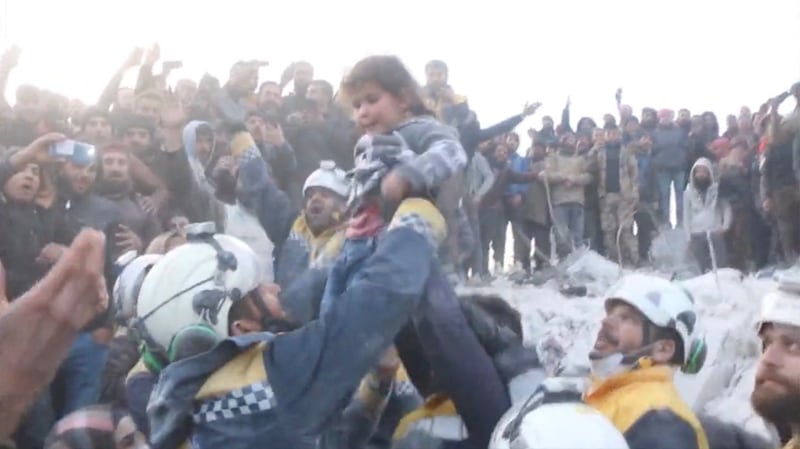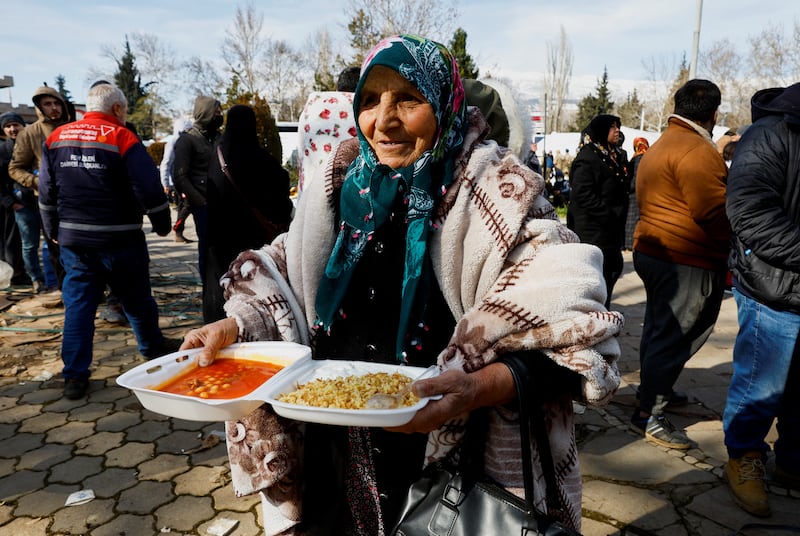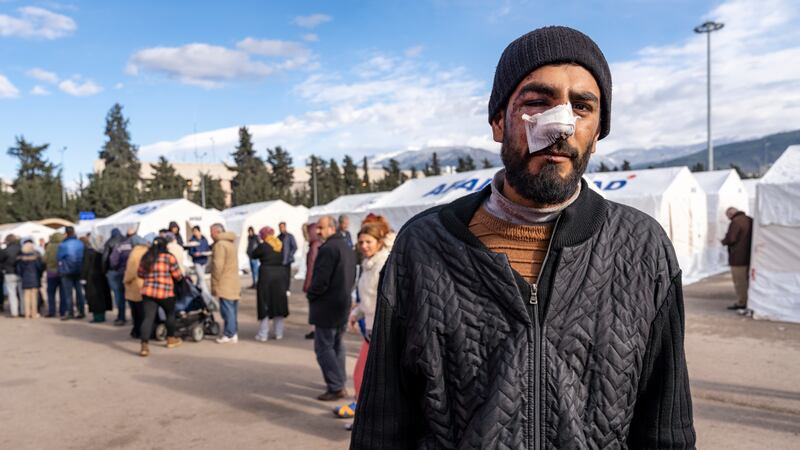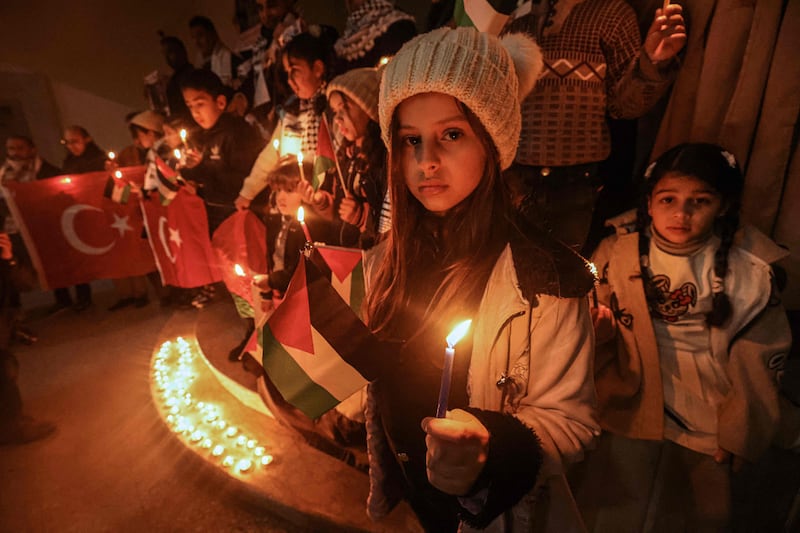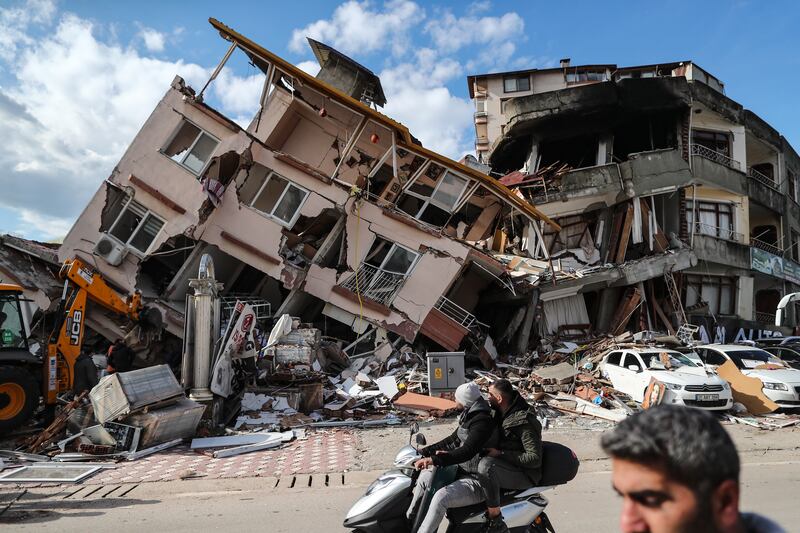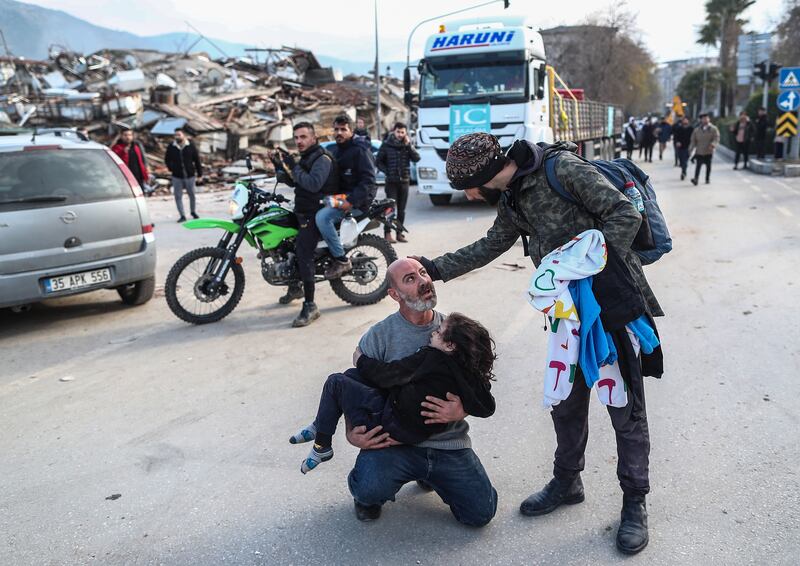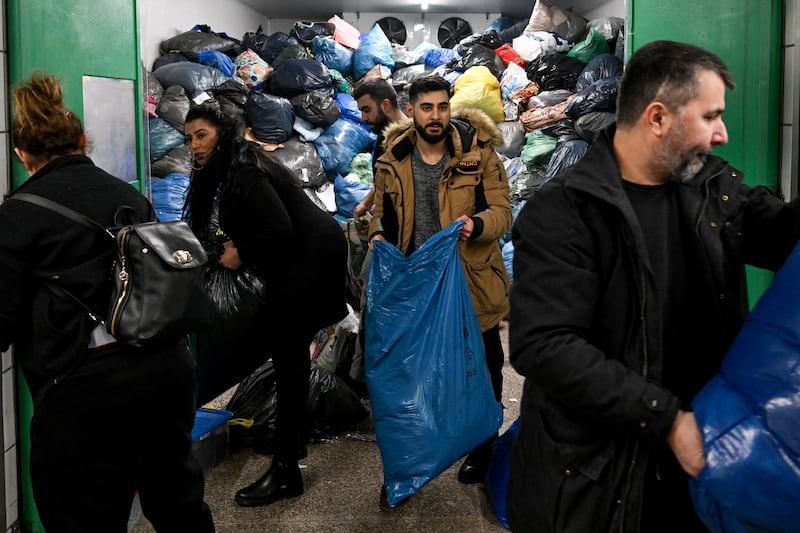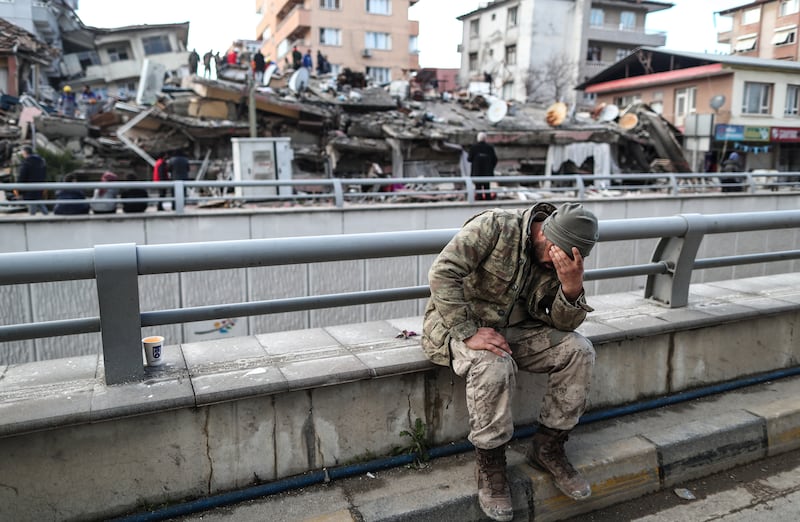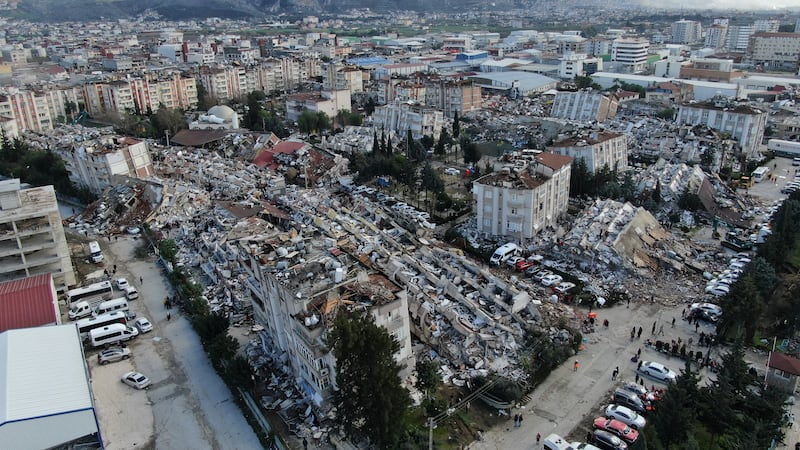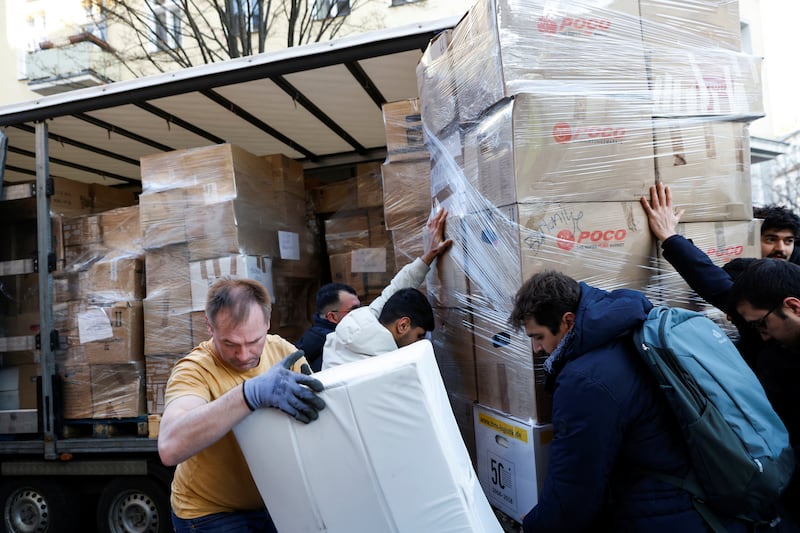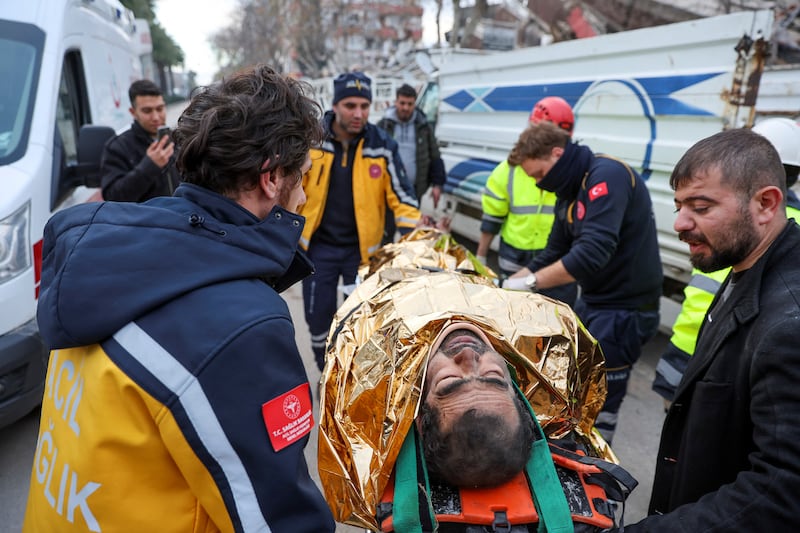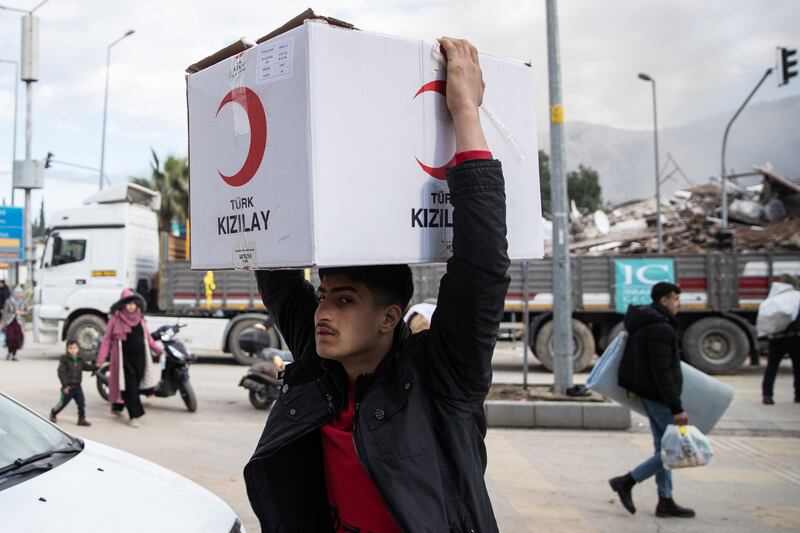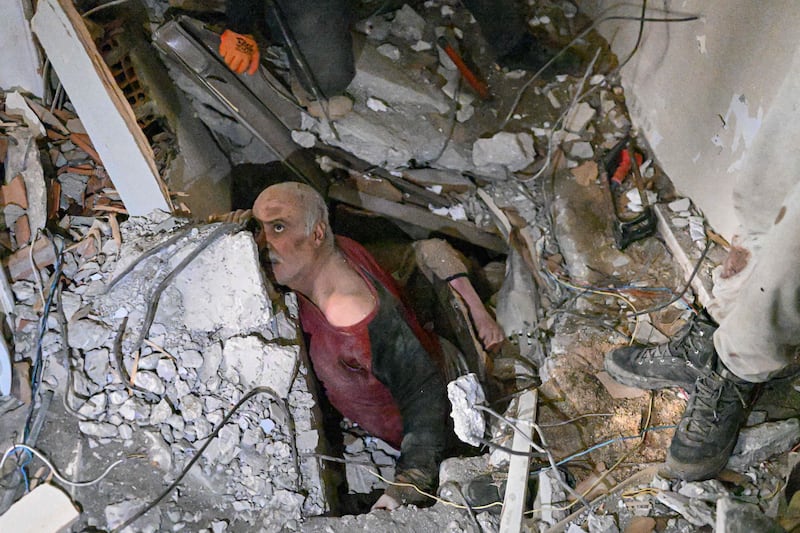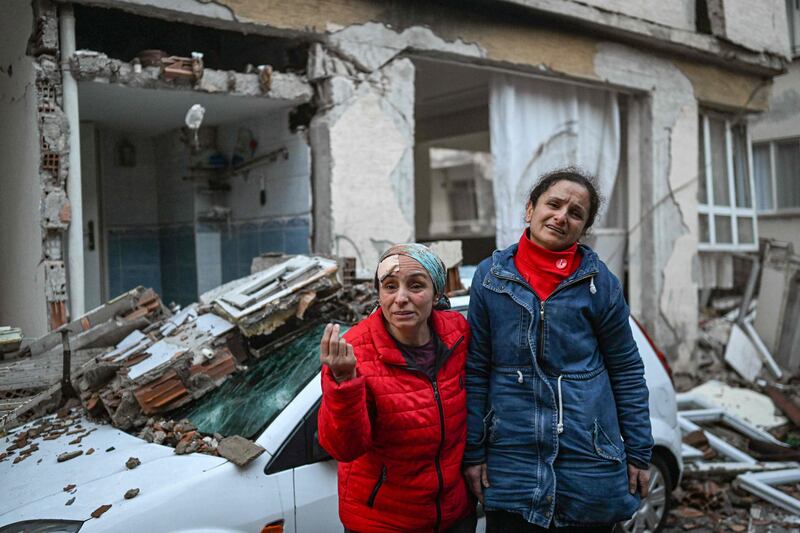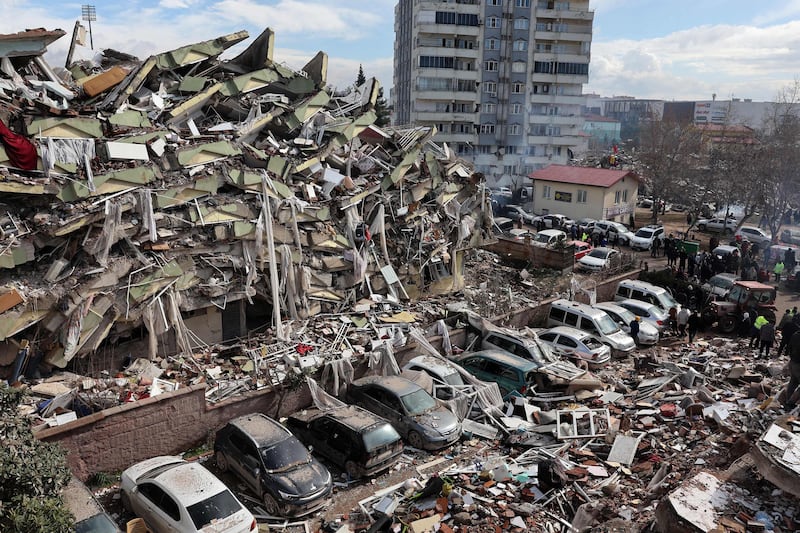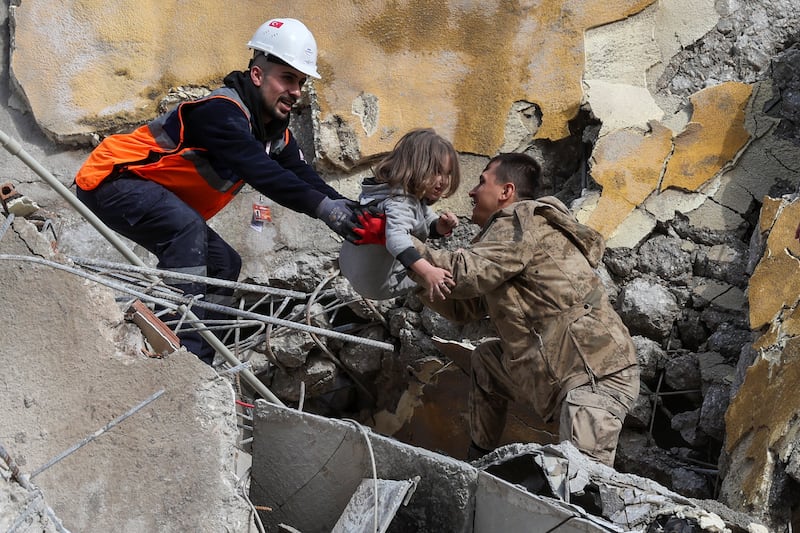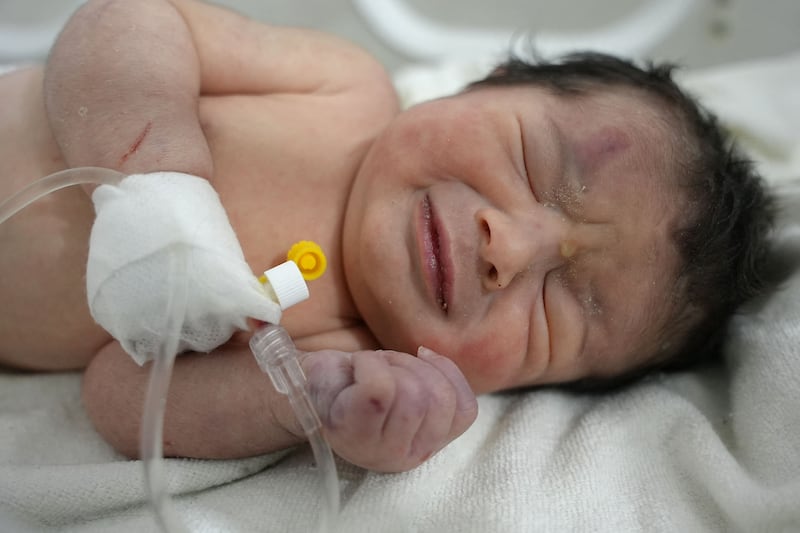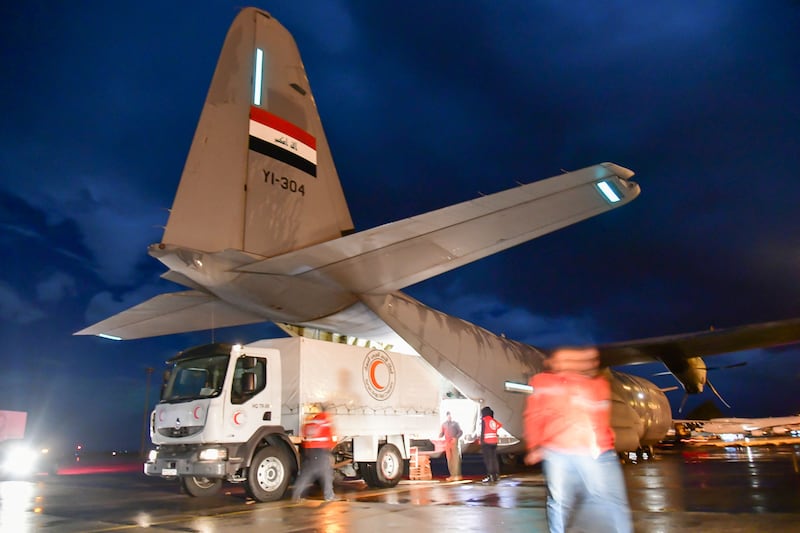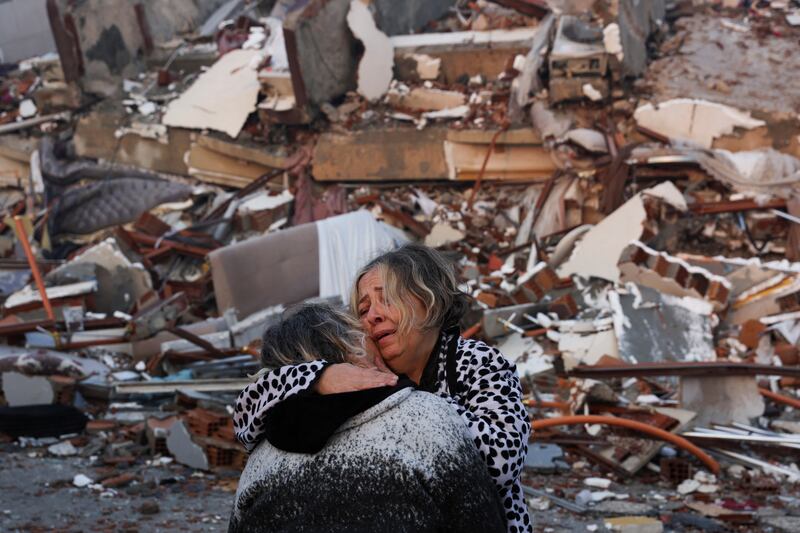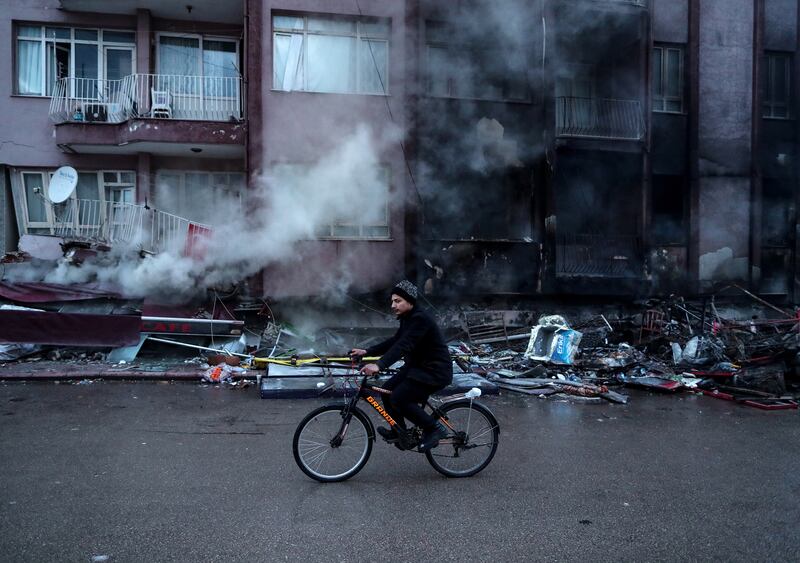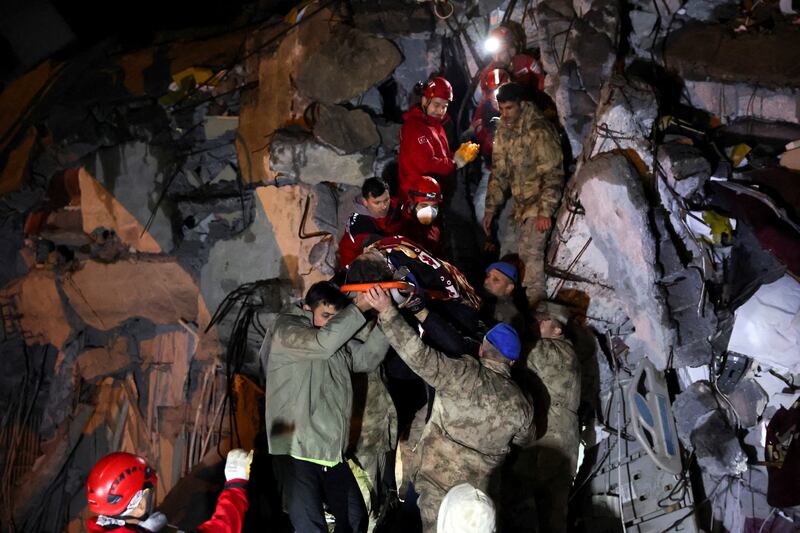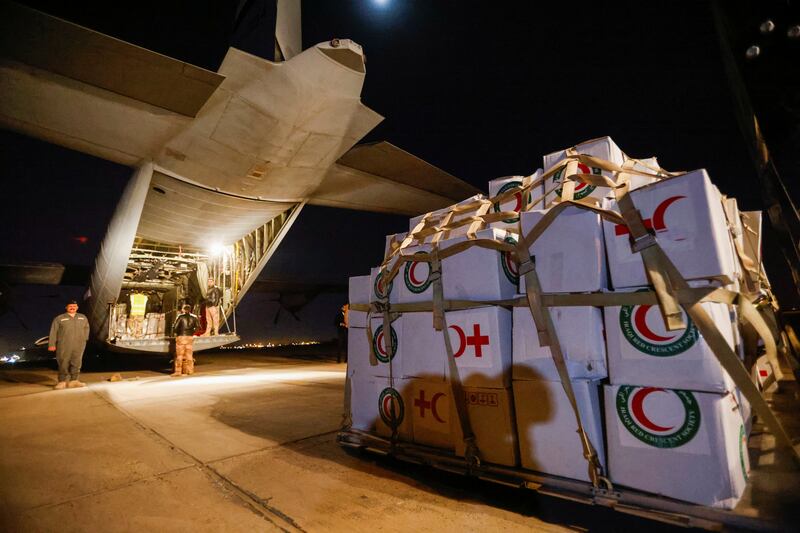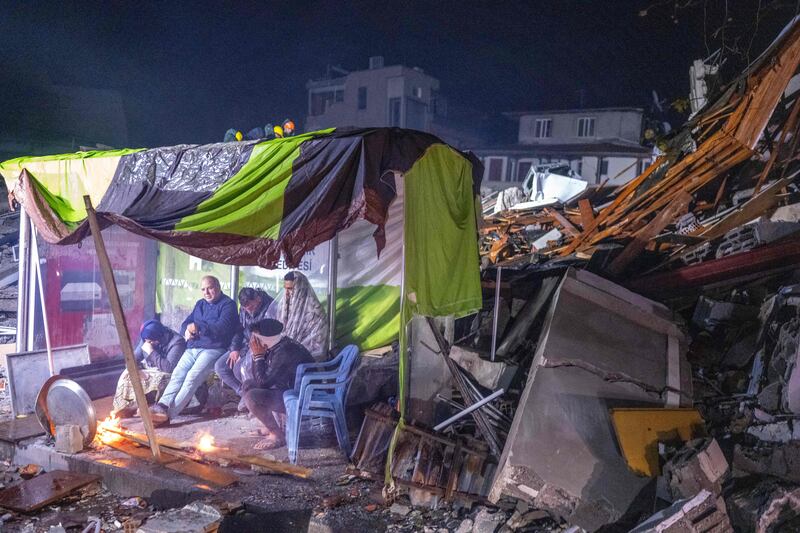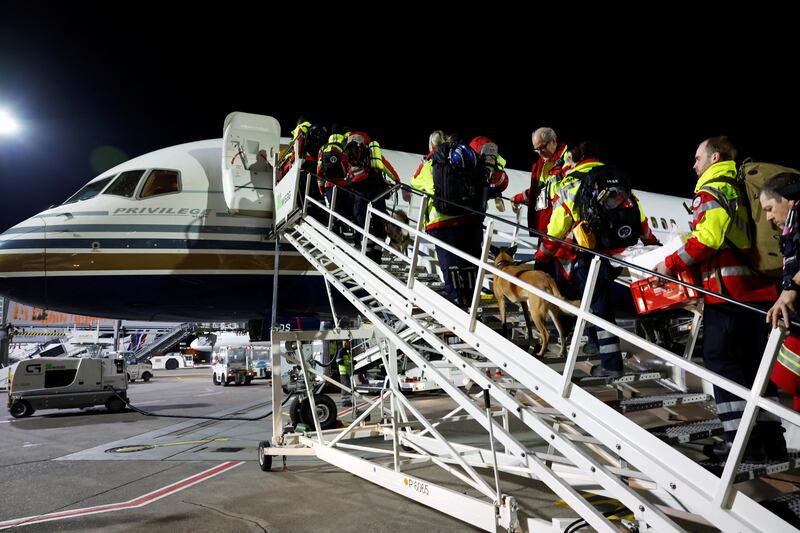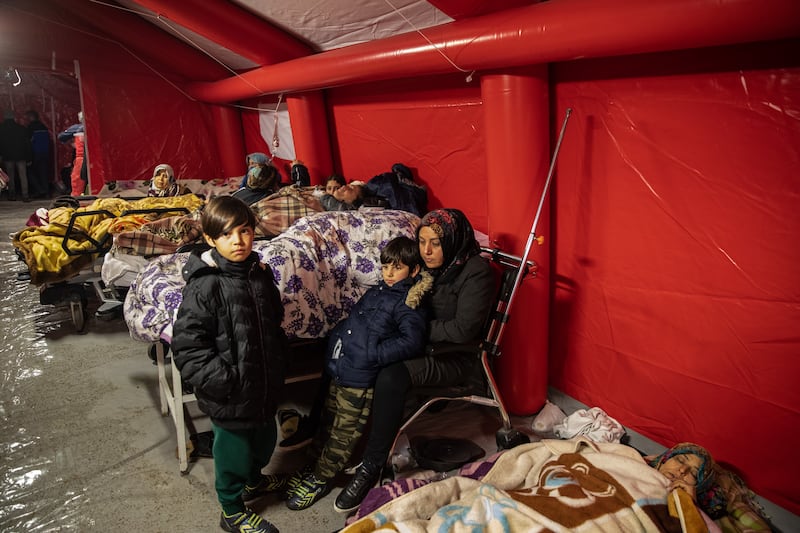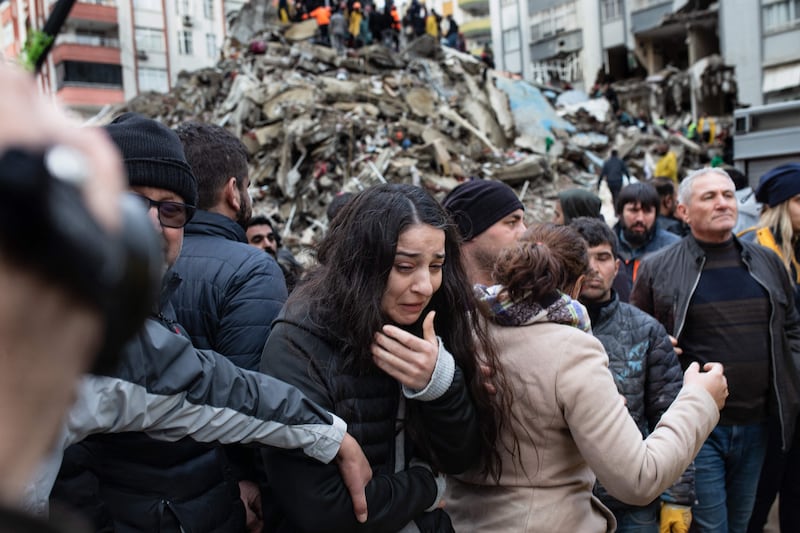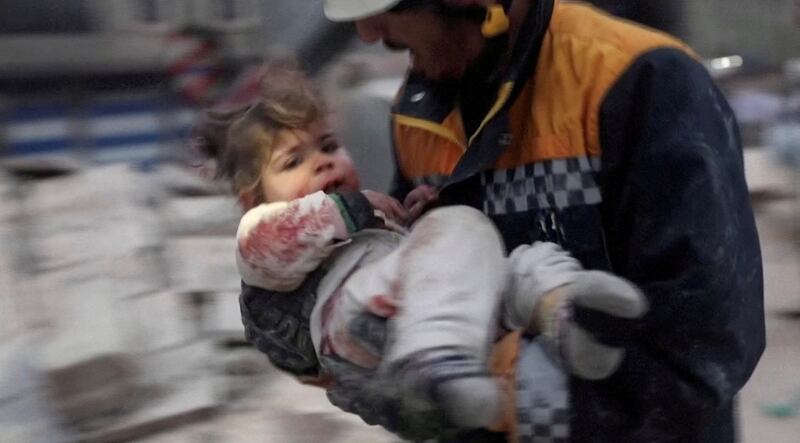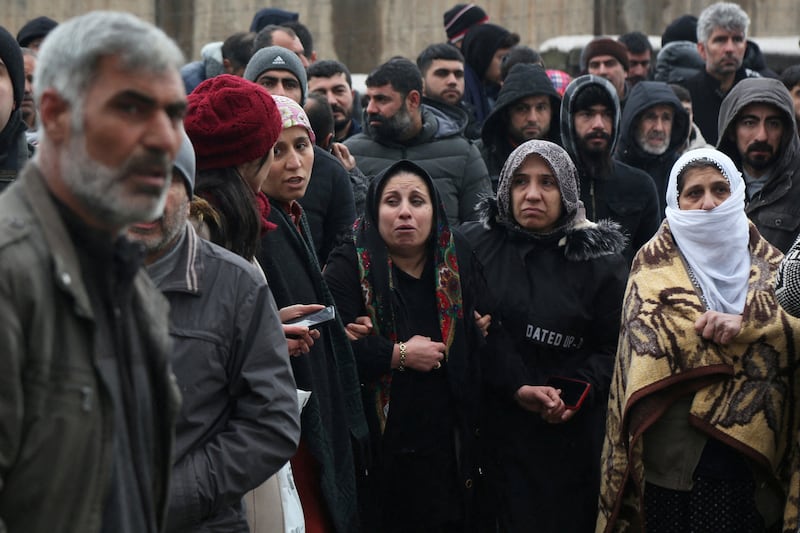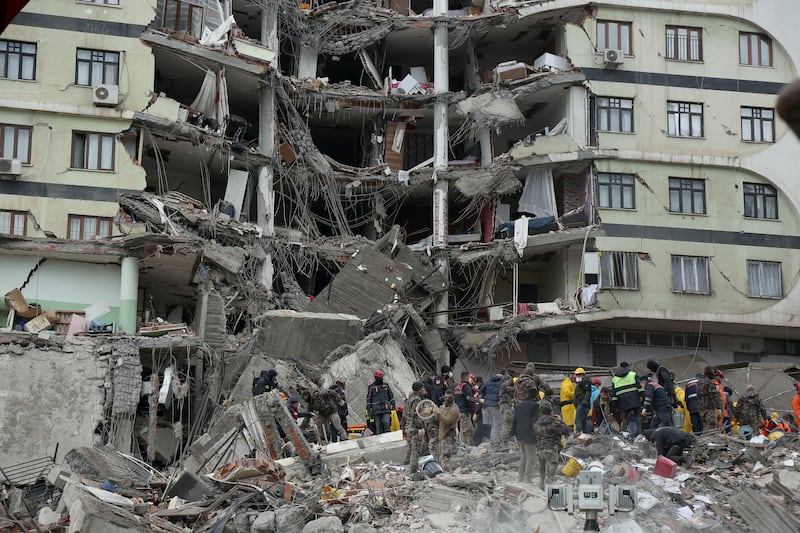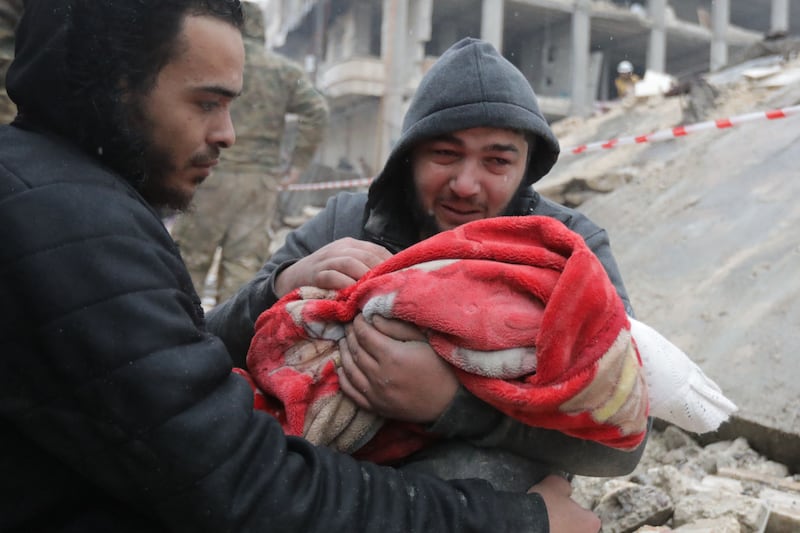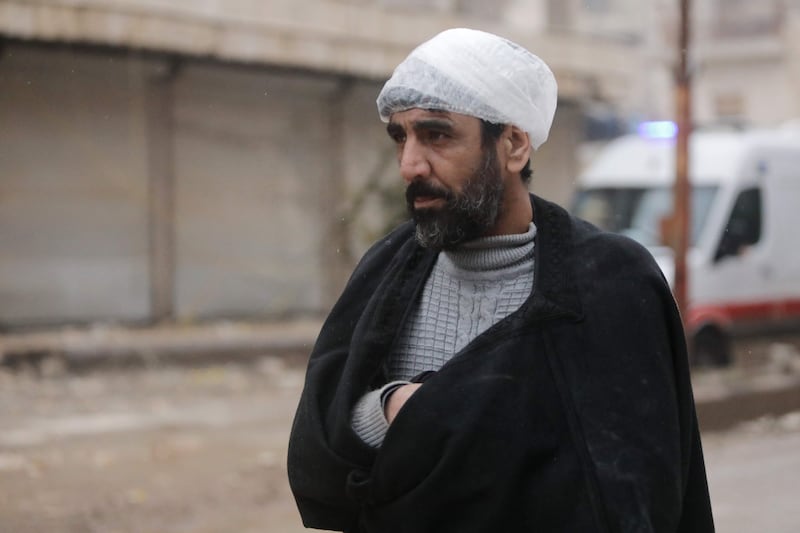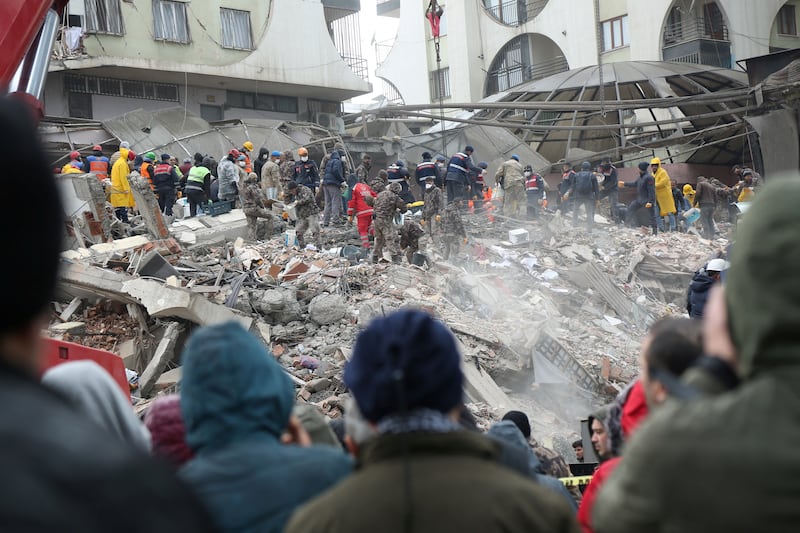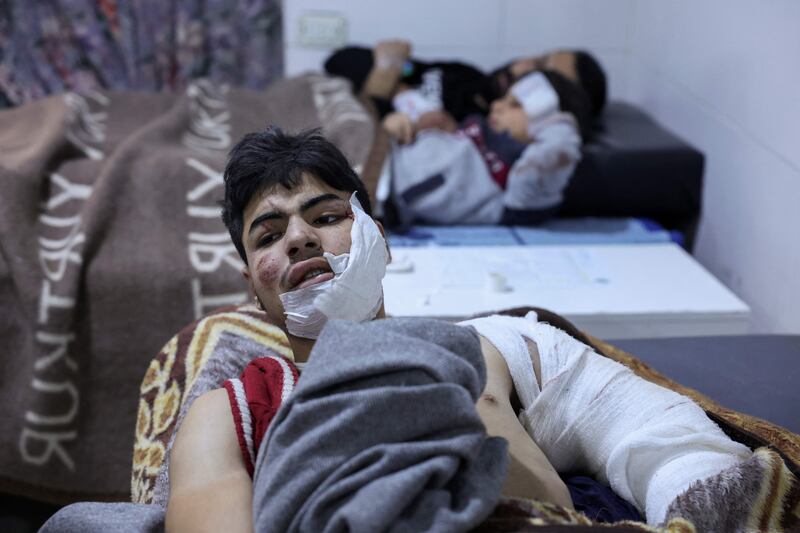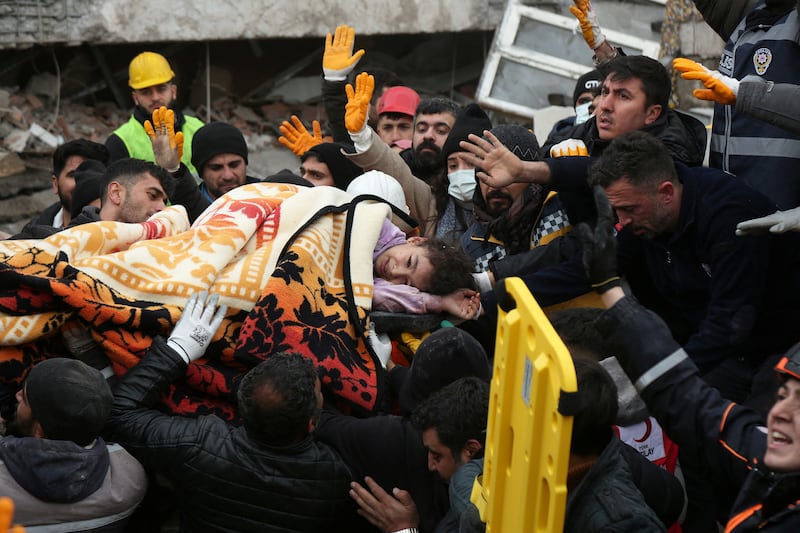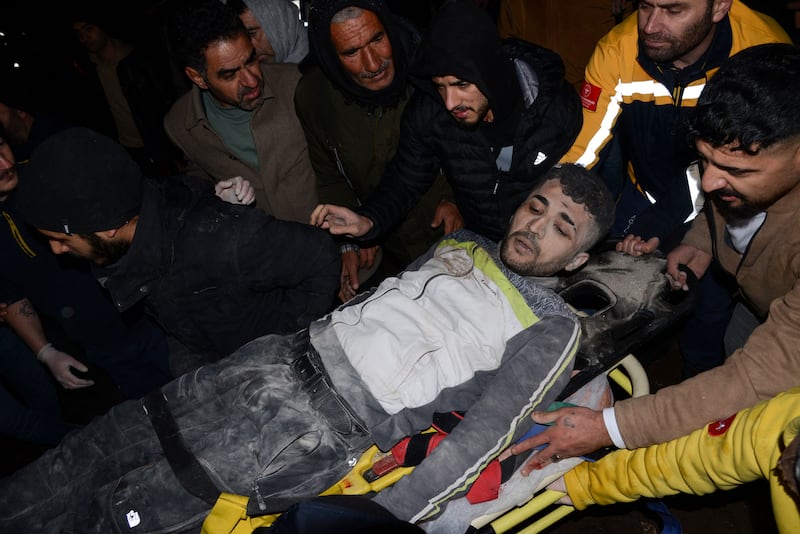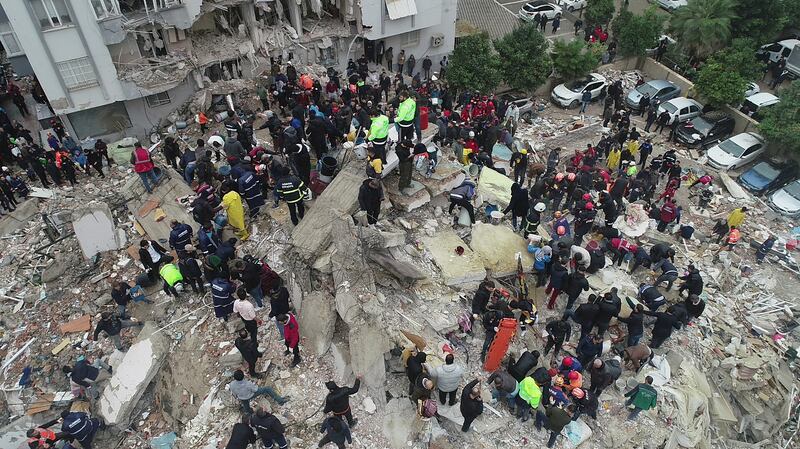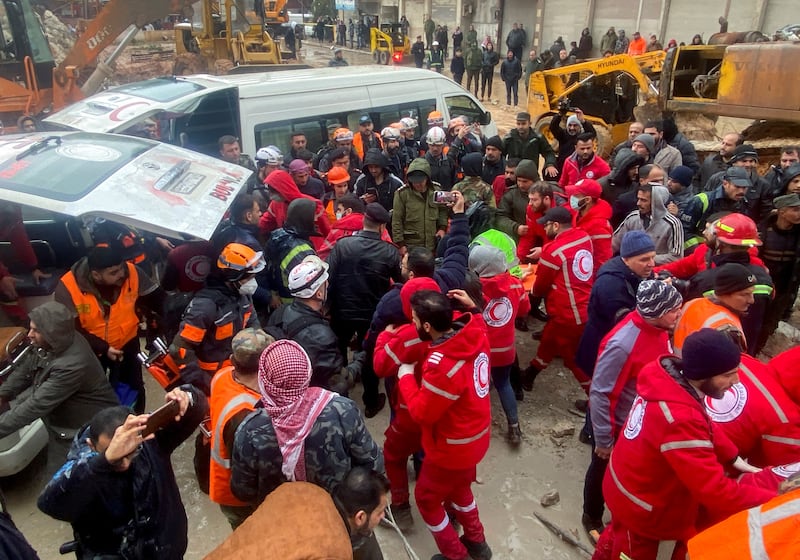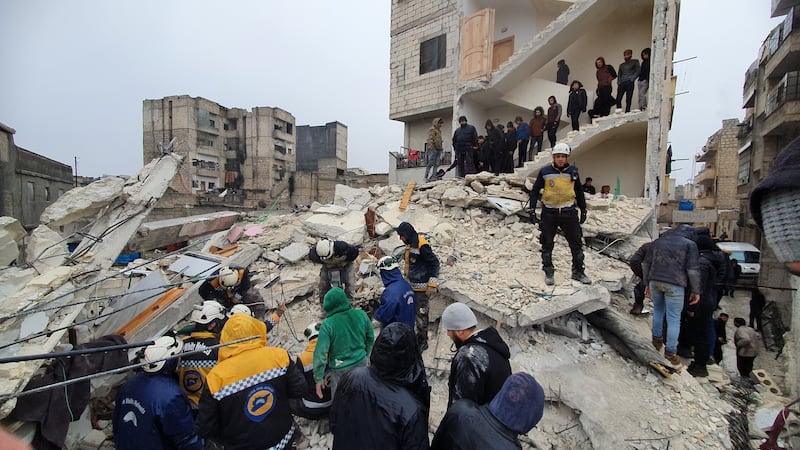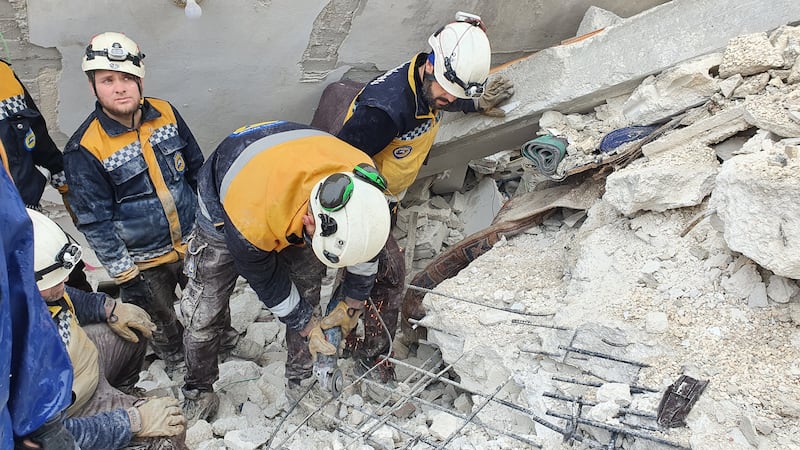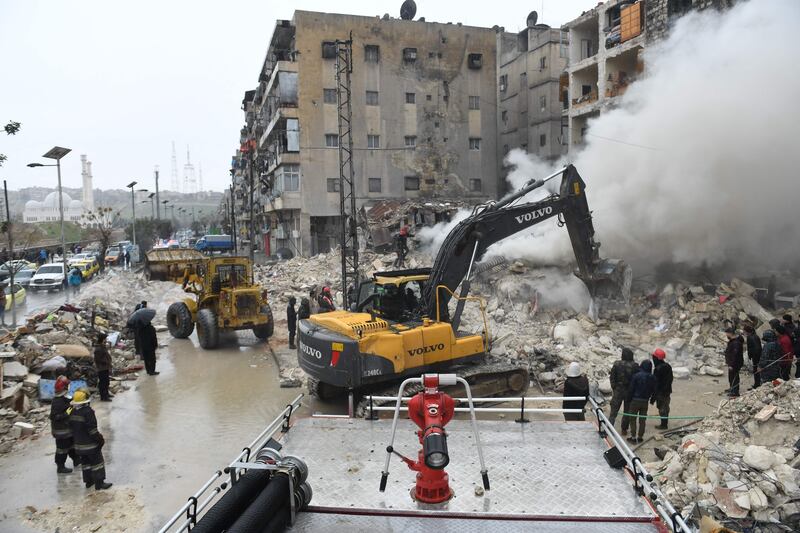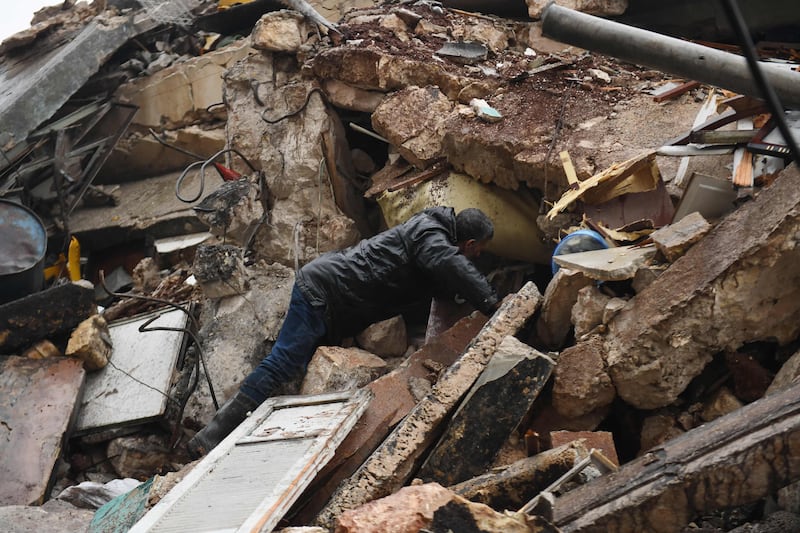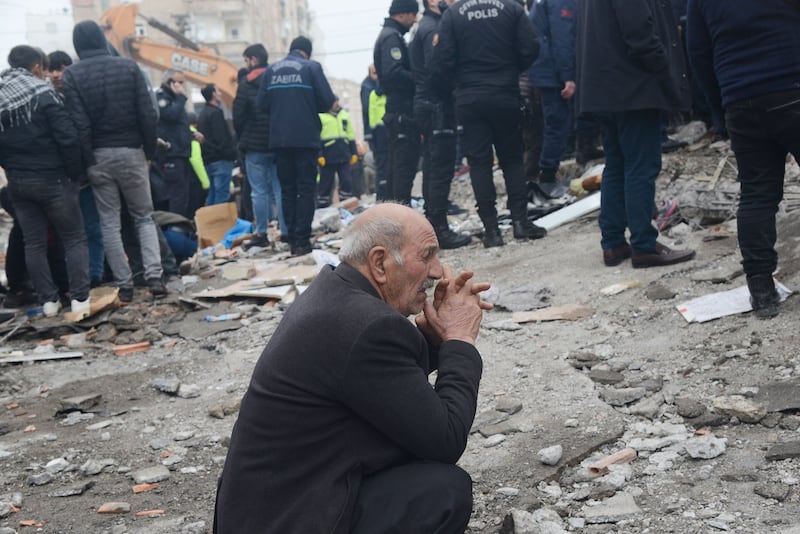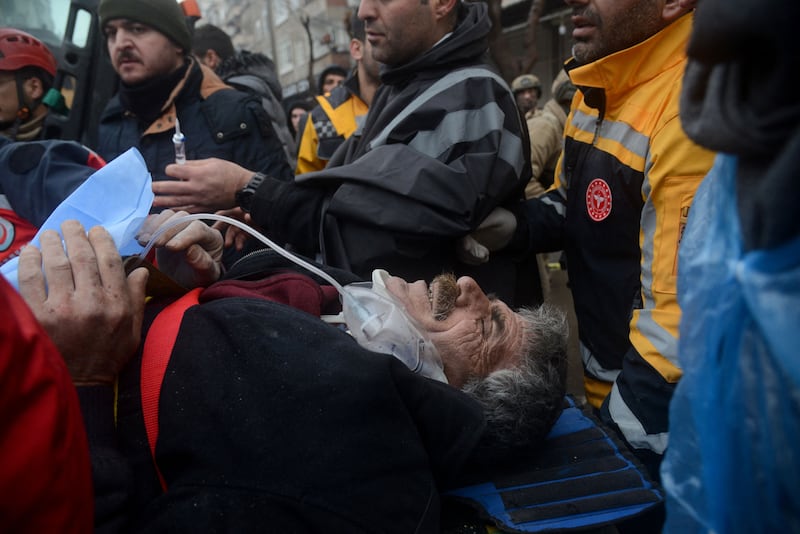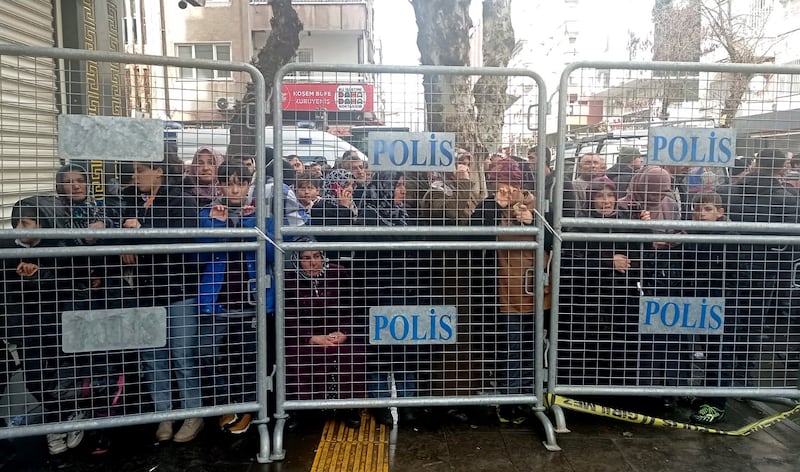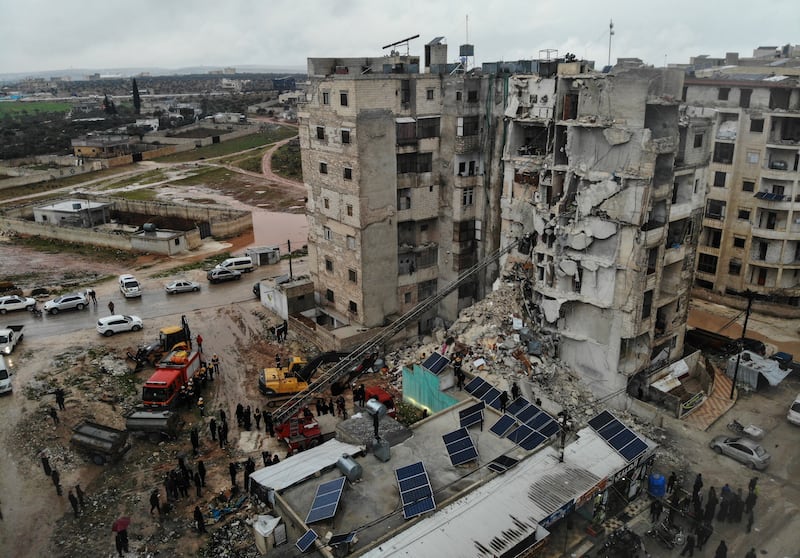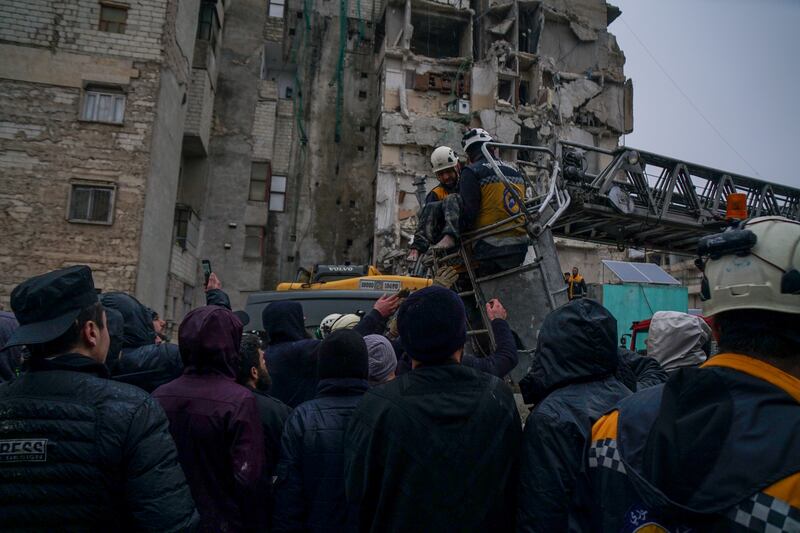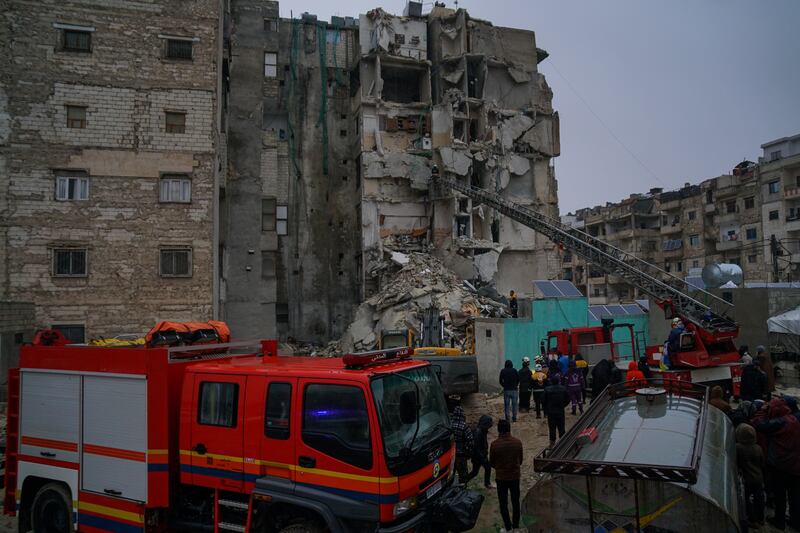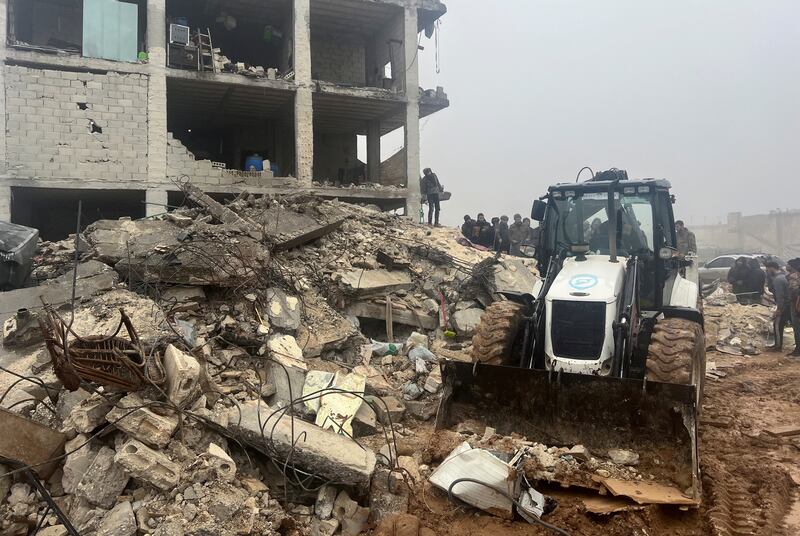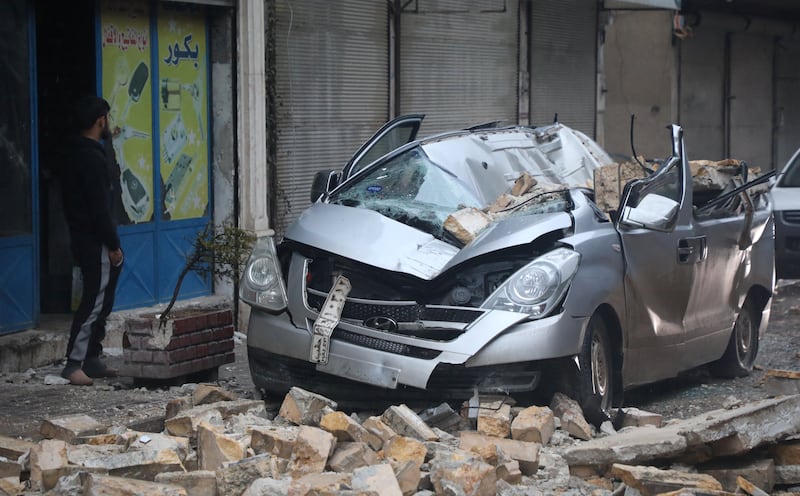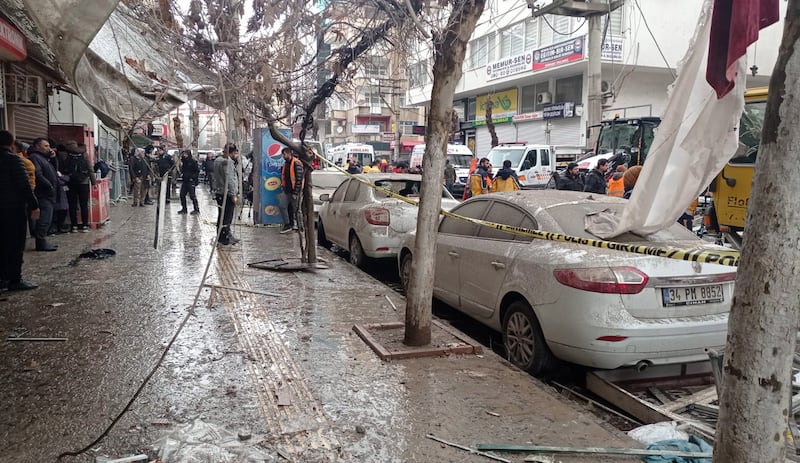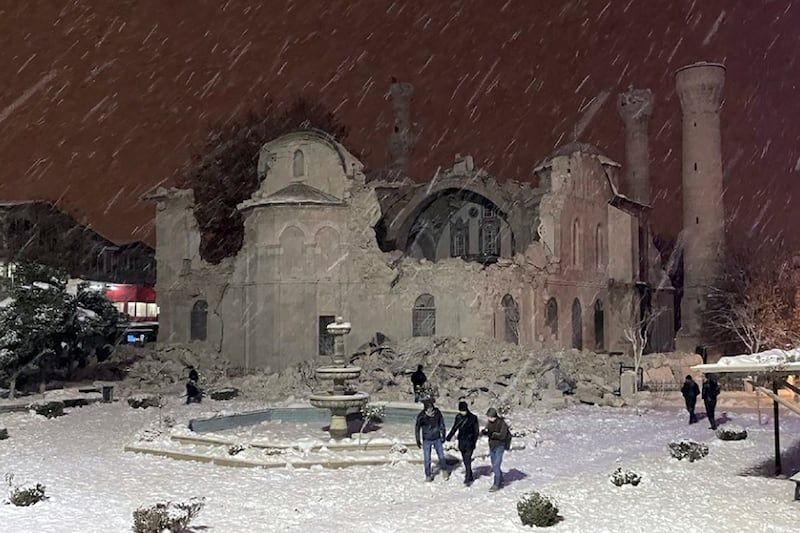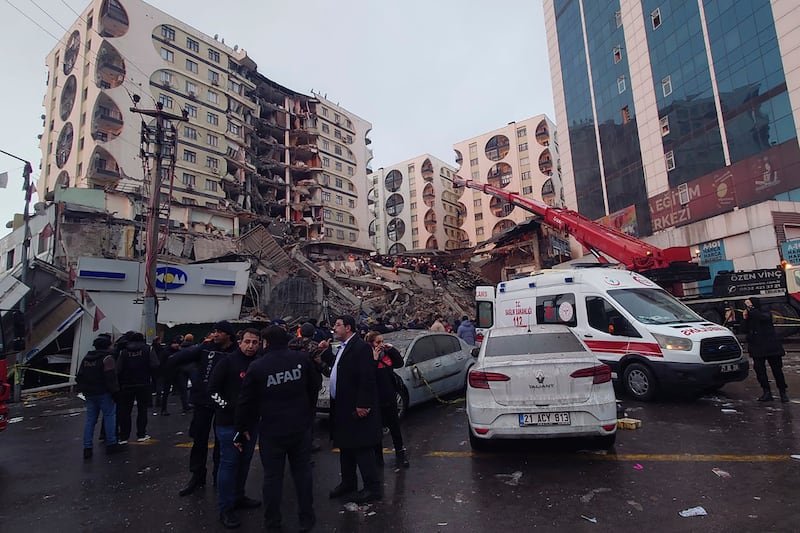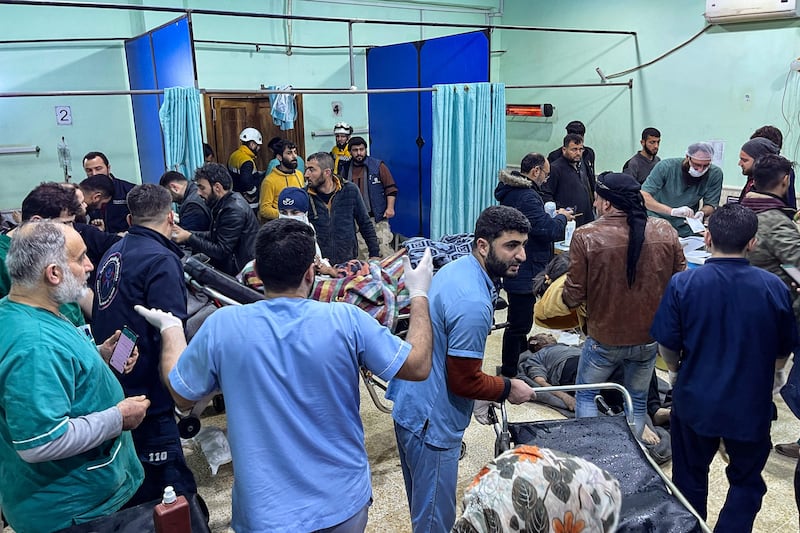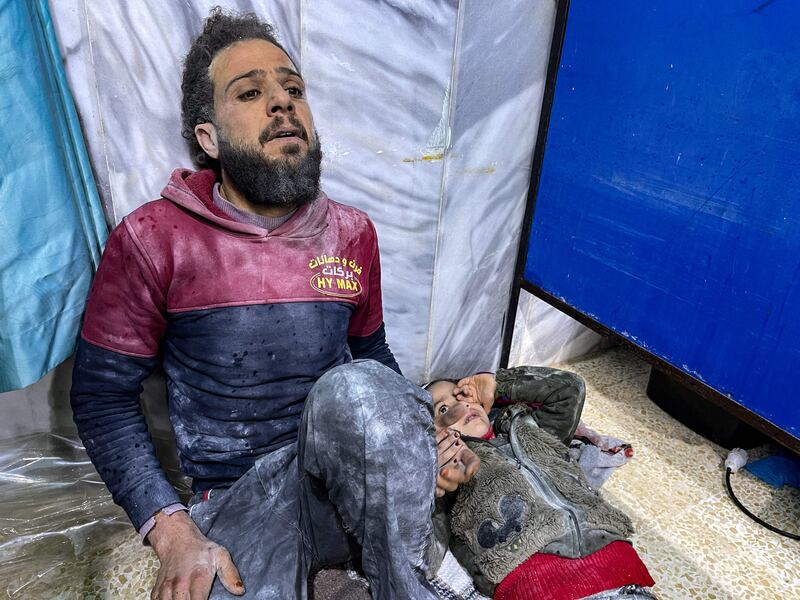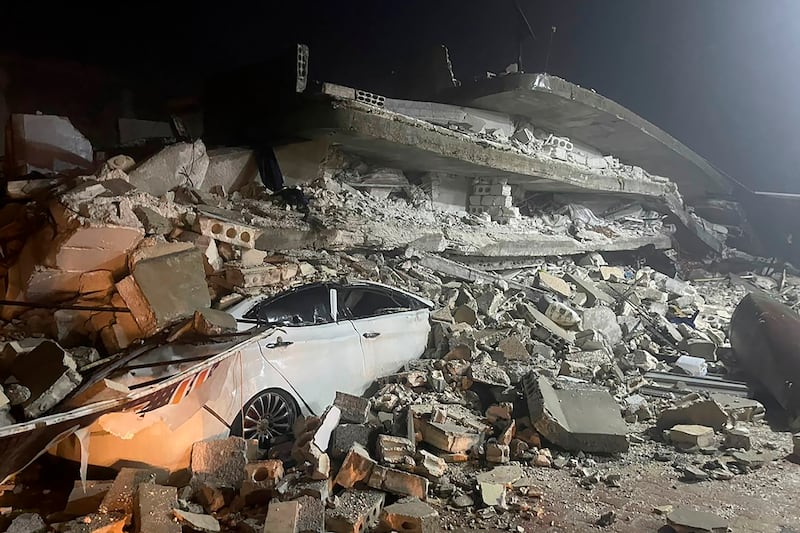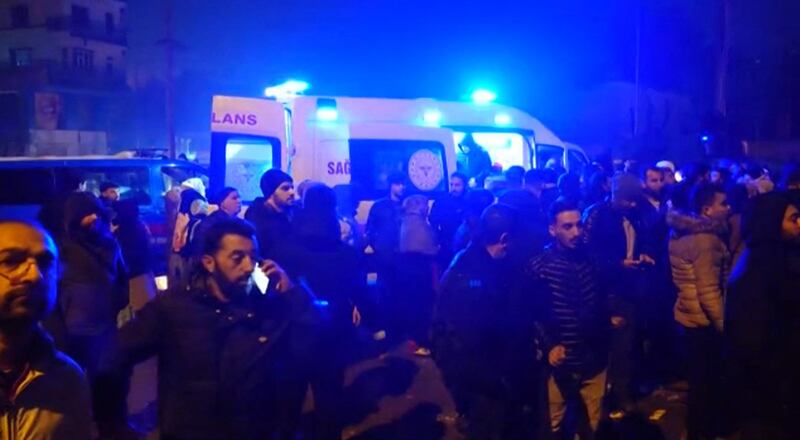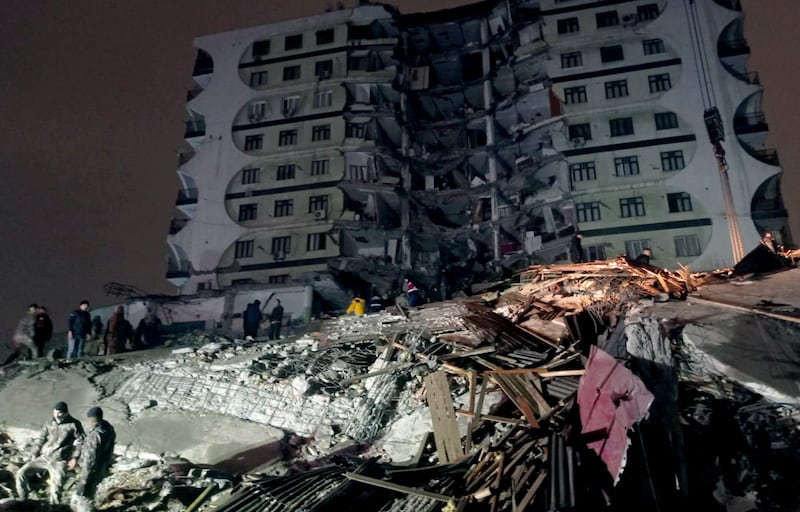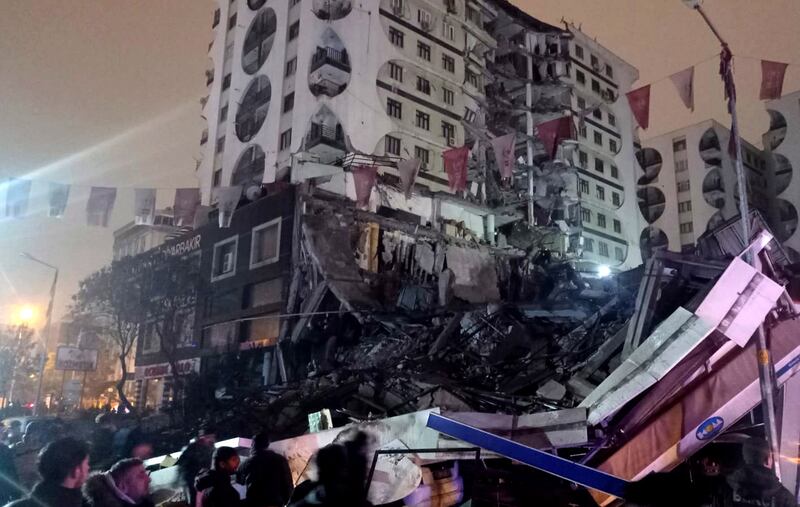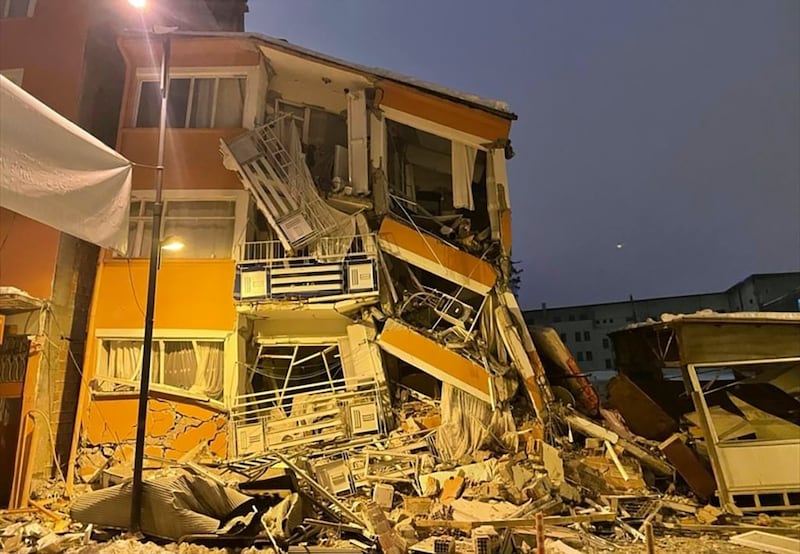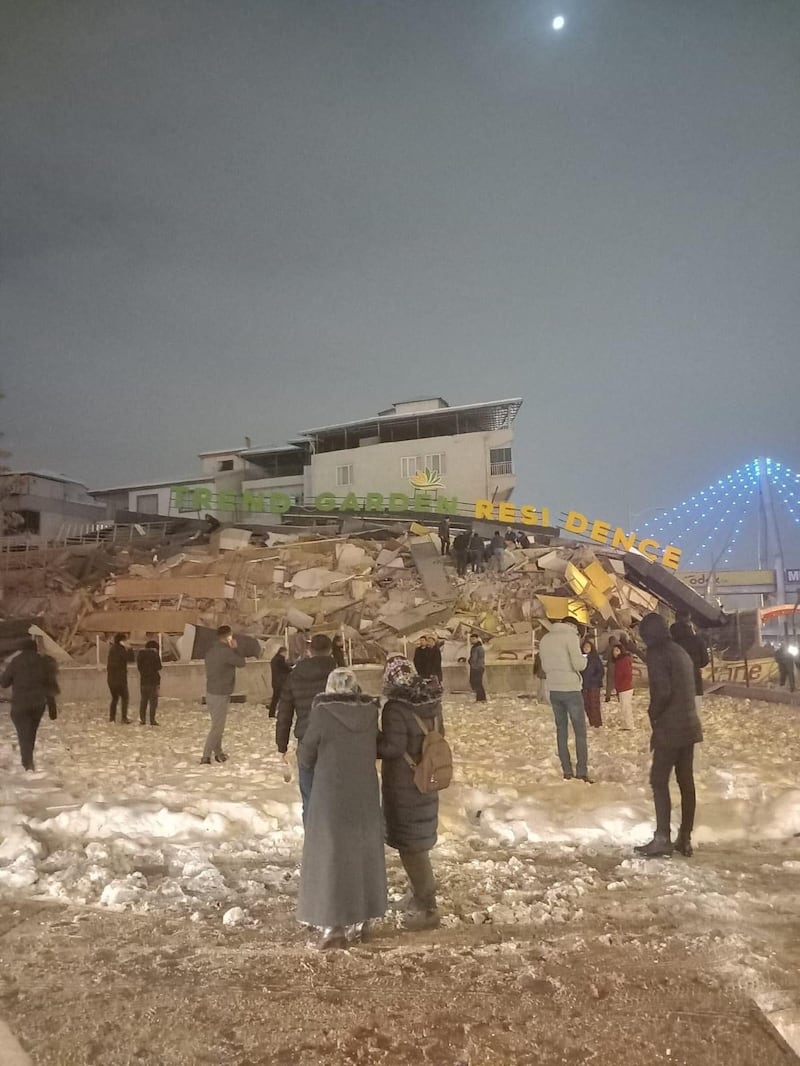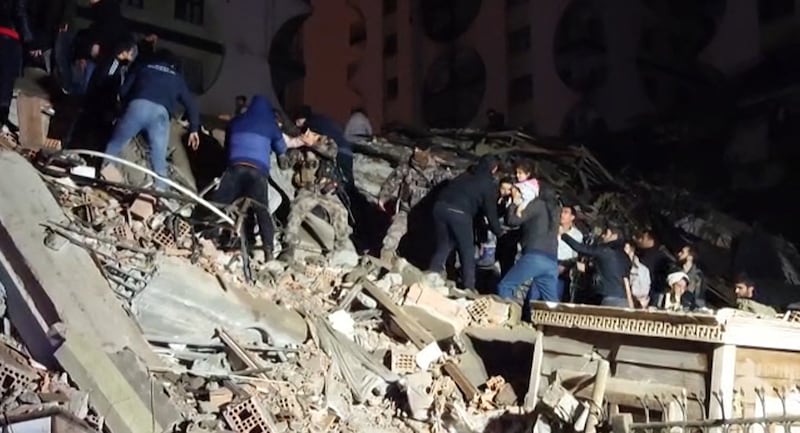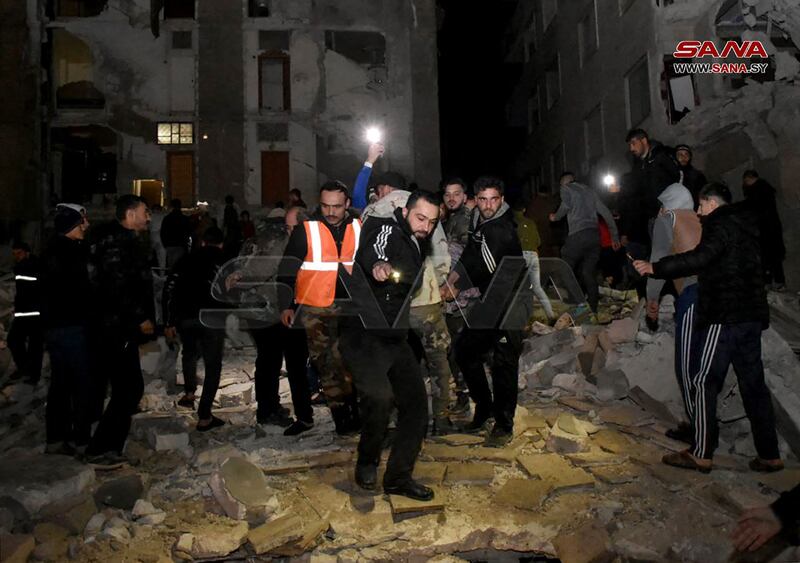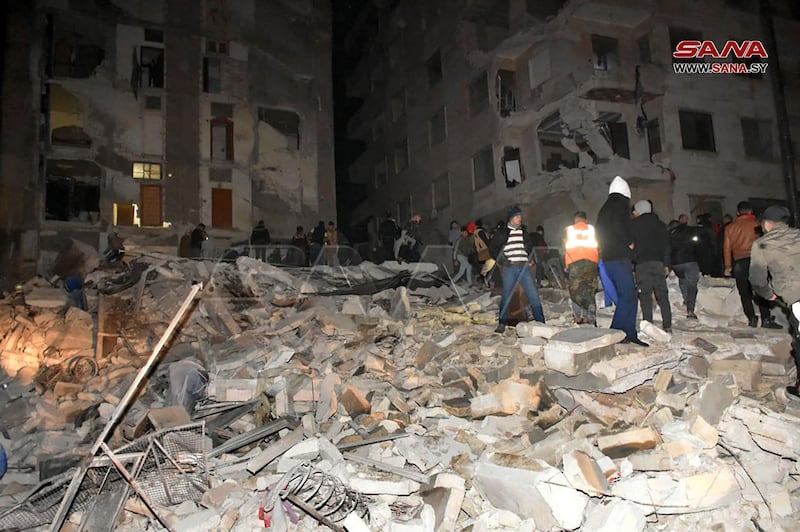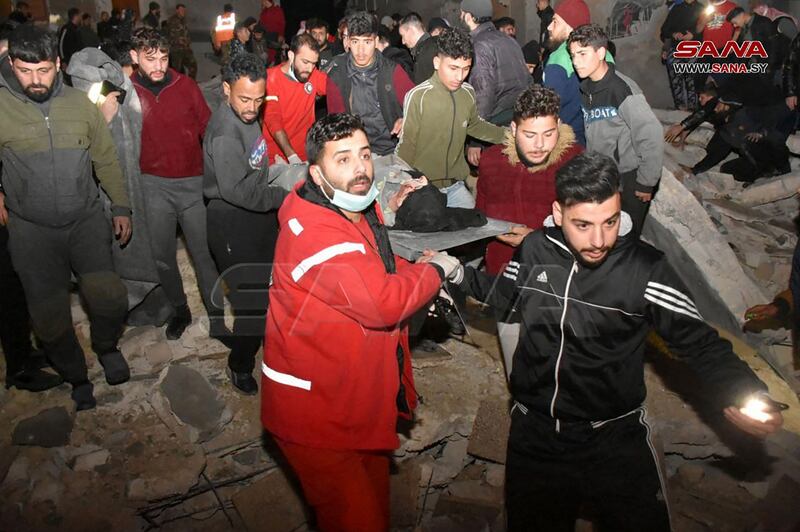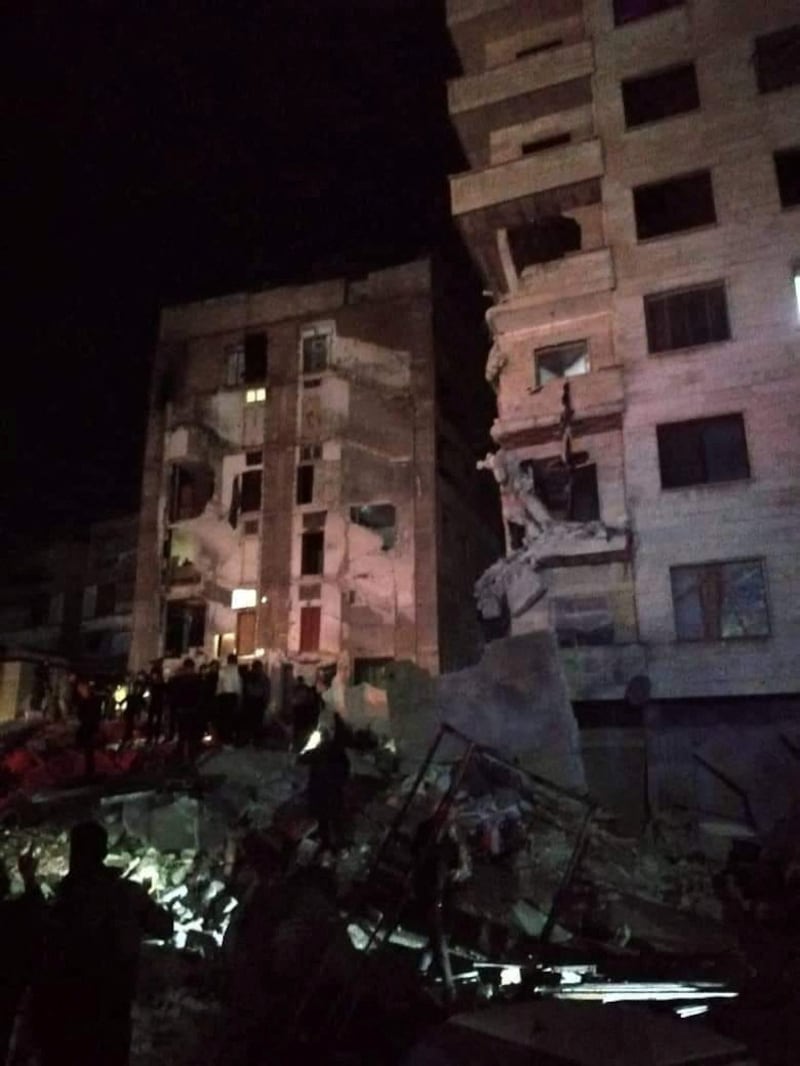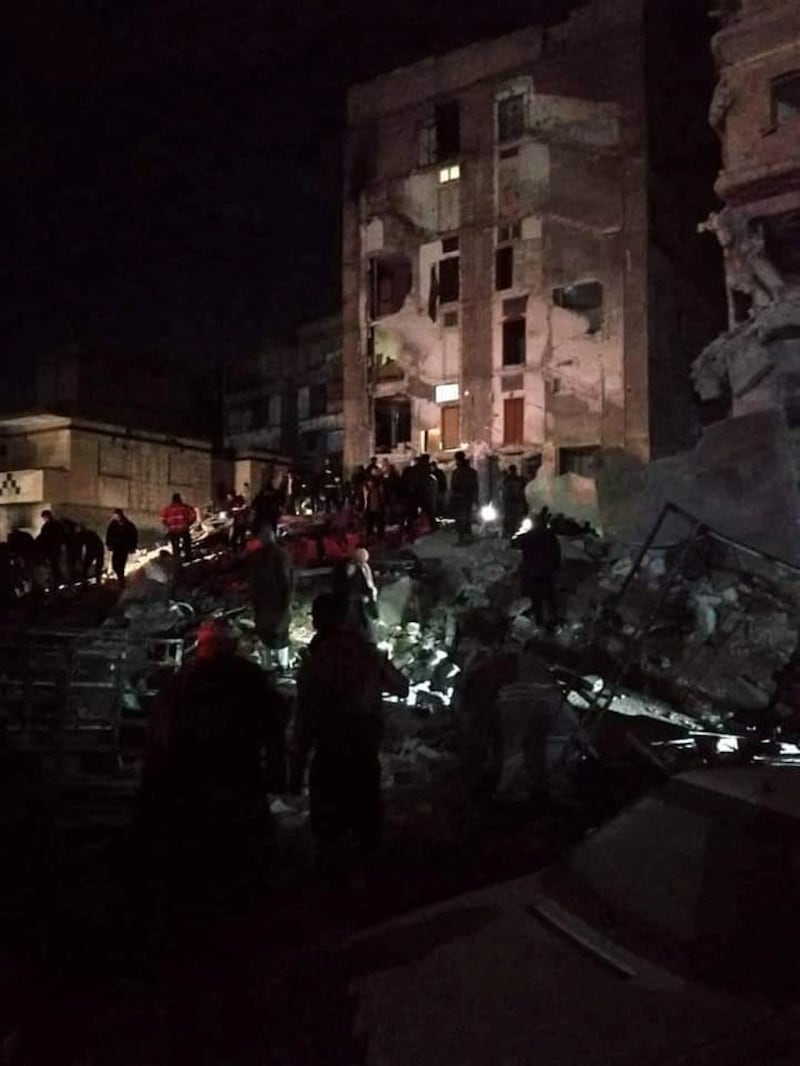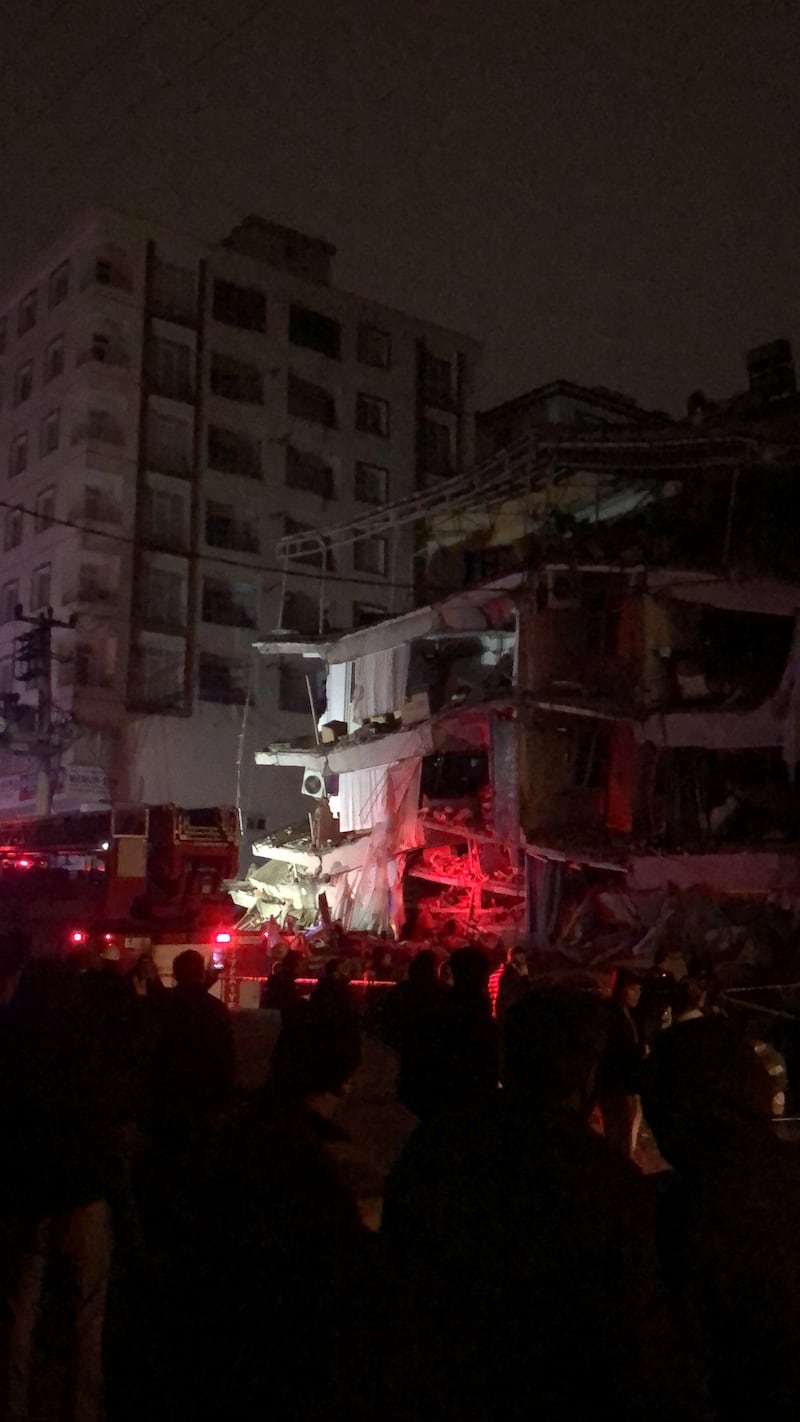Follow the latest on the earthquake in Turkey
Thousands are dead after a huge earthquake struck Turkey and Syria early on Monday morning.
Rescue teams have battled bad weather all week to save lives. By Friday, the death toll has risen beyond 21,000 in Turkey and Syria, with tens of thousands more injured.
Here's what you need to know.
When and where did the earthquake occur?
The epicentre was just north of Turkey's border region of Gaziantep, in the province of Kahramanmaras, but eight provinces have been affected. The ripples spread across the border into north-west Syria. The earthquake struck in the early hours of Monday morning.
The tremor lasted about a minute, destroying more than 6,000 buildings in Turkey alone, many occupied by sleeping residents.
The US Geological Survey, which tracks seismic activity around the world, said the earthquake struck at a depth of 17.9km where the Anatolia, Arabia, and Africa tectonic plates meet.
In Syria, where parts of many cities have been destroyed by 12 years of bombardment in a drawn-out civil war, many buildings are structurally unsound. The area where the quake struck is also in the hands of rival militia groups, preventing a co-ordinated response.
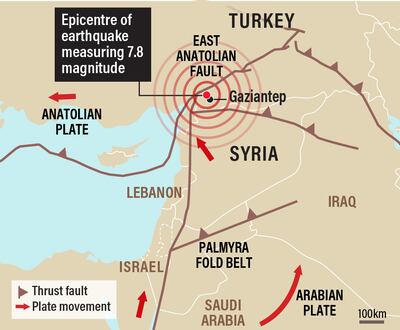
In a part of the Aleppo countryside controlled by rebel groups, members of the civil defence unit known as the White Helmets worked to free those beneath the rubble. The group said stormy weather had affected the pace and safety of rescue efforts.
State TV showed footage of rescue teams in heavy rain and sleet searching for survivors. Health officials advised people to stay outside and were asking the public to help take injured people to emergency rooms.
The Norwegian Refugee Council said the earthquake would only add to the suffering of millions of Syrians already enduring a humanitarian crisis due to the civil war.
Adelheid Marschang, senior emergency officer at the World Health Organisation, said Turkey had a strong capacity to respond to the crisis but the main needs in the immediate and medium term would be across the border in Syria, where residents are grappling not only with the war, but also a cholera outbreak.
"This is a crisis on top of multiple crises in the affected region," she said at a WHO board meeting in Geneva.
"All over Syria, the needs are the highest after nearly 12 years of protracted, complex crisis, while humanitarian funding continues to decline."
She said 23 million people, including 1.4 million children, were likely to be exposed in both countries after the earthquake and its aftershocks had reduced thousands of buildings to rubble.
"It's now a race against time," said WHO director general Tedros Adhanom Ghebreyesus. "Every minute, every hour that passes, the chances of finding survivors alive diminishes.
Where else was the earthquake felt?
Deadly earthquake hits southern Turkey
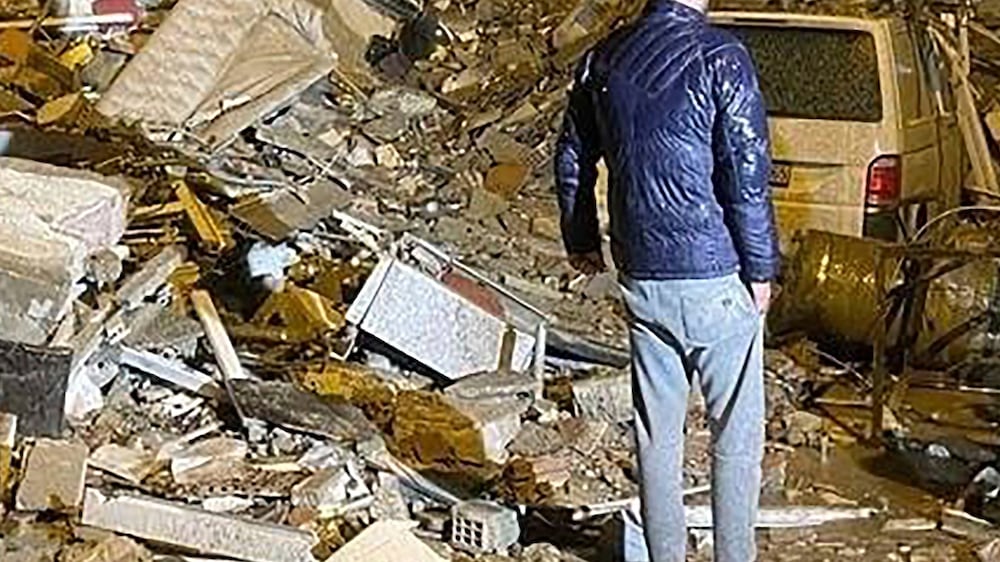
The 7.8-magnitude earthquake was also felt in Lebanon and Cyprus. In Beirut, the site of a chemical explosion that rocked the city two and a half years ago, the shaking of windows and walls sparked fear of another tragedy.
In Iraq's northern Duhok region, residents felt the quake so strongly they rushed outside to safety.
How many aftershocks were felt?
Almost 200 aftershocks were reported, as well as a second earthquake. Geological survey agencies said more could occur.
Eleven minutes after the initial earthquake, an aftershock of magnitude 6.7 followed, the US Geological Survey said. The magnitude of the aftershocks is more severe than many of the region's worst quakes.
When was the area's last big earthquake?
Turkey is no stranger to earthquakes. The last large tremor in the area occurred on January 24, 2020 in Elazıg. The 6.8-magnitude quake produced hundreds of aftershocks, interfering with rescue efforts.
More than 17,000 people were killed in 1999 when a 7.6-magnitude quake struck Izmit, a city south-east of Istanbul. In 2011, an earthquake in the eastern city of Van killed more than 500 people.
The region between Turkey and Syria has not suffered such a big earthquake in the Turkish province of Kahramanmaras for more than 100 years, the director of the Swiss Seismology Service said on Thursday.
What about rescue efforts?
Early on Friday, a teenager was pulled, largely unscathed, from beneath the rubble of a collapsed building in the Turkish city of Gaziantep — but four days after the earthquake struck the possibility of finding more survivors was rapidly shrinking.
Temperatures were below freezing across the region and many people have no place to shelter.
The government has distributed millions of hot meals, as well as tents and blankets, but is still struggling to reach many people in need.
Mustafa Turan rushed to his hometown of Adiyaman from Istanbul hours after the quake struck to check on his relatives. He counted 248 collapsed buildings between the airport and the city centre, AP reported.
The journalist said on Friday that 15 of his relatives had been killed, and scores of people were sleeping outside or in tents.
“At night, about 4am, it got so cold that our drinking water froze,” he said.
With morgues and cemeteries overwhelmed, bodies lay wrapped in blankets, rugs and tarps in the streets of some cities.
Turkey’s disaster management agency said more than 18,000 people had been confirmed killed in the disaster so far in Turkey alone, with nearly 75,000 injured.
No figures have been released on how many have been left homeless, but the agency said more than 75,000 survivors have been moved to other provinces.
